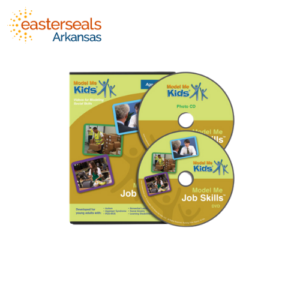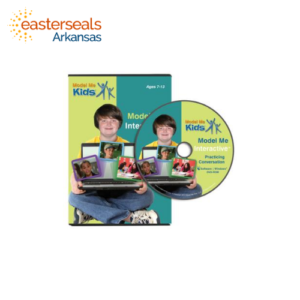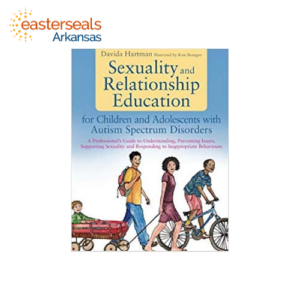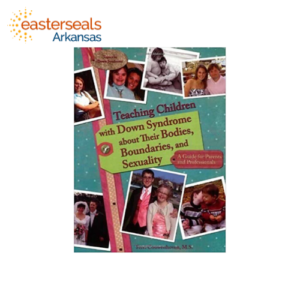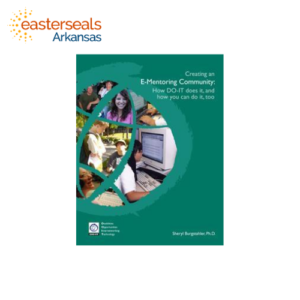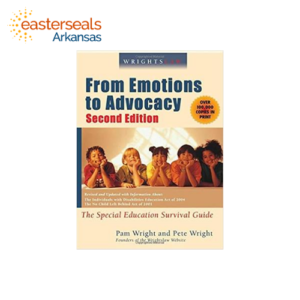-
The Model Me Job Skills™ video models social skills helpful for gaining and maintaining employment. The video is hosted by the young adults in the video, who narrate each scene. The visual is combined with narration and graphics that help explain the particular rule. Each social skill is demonstrated in more than one situation and across environments. This is useful to individuals with Autism because it helps with generalization of the skill taught. Recommended for ages 15-21
-
Model Me Interactive™: Practicing Conversation For Ages 7-13 | Developed for children with Autism, Asperger Syndrome, and Developmental Delays. For a laptop with webcam. Model Me Interactive™: Practicing Conversation combines video modeling teaching tools with the interactive capability of software. First, video models a conversation between children. Then, the student practices the conversation using a webcam. The practice conversation is recorded and a feedback area allows teachers to comment on and grade a student's recordings. Ideal for professionals including teachers, therapists, and speech language pathologists.
-
Model Me Movement™: Balance, Core, & Calming is a video of short, easy-to-follow movement activities developed by Occupational Therapist Dr. Fabiane Curro. The video is designed to improve balance, increase core strength, and promote self-calming. The DVD contains six 8-11 minute movement segments each modeled by a child and guided by an adult. The activities are designed to target skills that help with coordination, body awareness, self-regulation, and promote an overall feeling of physical well-being.Recommended for ages 9-17
-
Children and adolescents with Autism Spectrum Disorders (ASD) require specialized teaching strategies when learning about puberty, sexuality and relationships. This professional resource offers practical teaching advice geared towards the needs of young people on the autism spectrum. Beginning with information on good practice, policy, teaching methods and recent research, the book then divides into key sex education topics that assist professionals in developing their own individualized and developmentally appropriate curricula. Covering issues of gender, public and private, puberty, hygiene, emotions, sex and more, each topic provides an overview of the difficulties that children with autism might experience, discussion and activity ideas and photocopiable resources including instructional stories, checklists and illustrations. The final section demonstrates how to respond to ongoing patterns of inappropriate behaviour and put together a behaviour plan. Aiming to explain and support the child's developing sexuality while also addressing crucial issues of safety, this book is a much-needed teaching manual for all professionals working with children and young adults with autism including educators in mainstream and special education, psychologists, therapists and social workers.
-
Parents of children with Down syndrome and other intellectual disabilities are accustomed to paying close attention to their child's physical, cognitive, and emotional development. This proactive approach should also include their child's sexual development, which for many parents may not seem as obvious or urgent, especially to those with young children. Drawing on her unique background as both a sexual educator and mother of a child with Down syndrome, the author blends factual information and practical ideas for teaching children with Down syndrome about their bodies, puberty, and sexuality. This book gives parents the confidence to speak comfortably about these sometimes difficult subjects.
-
This accessible and positive resource helps parents and carers teach girls and young women with autism or related conditions about masturbation. It covers when and where it is appropriate and helps to establish boundaries surrounding privacy more generally. With simple but explicit illustrations, this book provides the perfect platform to talk about sexuality with girls and young women with autism or related conditions.
-
This book explores positive internal characteristics and external factors that contribute to success--personally, socially, spiritually, academically, and professionally. These factors can be used to provoke thought and promote interaction between teens and caring adults. In this book you will not find the stories of movie stars, international leaders, or other celebrities. Although the content is based on personal experiences of successful people with disabilities, all of the people represented here would not be considered super-achievers in all areas of their lives. You'll hear the stories of everyday people striving for the best life has to offer. This book highlights advice from people who confront barriers as challenges rather than deterrents and who find insight and humor during trying times. It shares some of the attitudes, skills, and strategies that have contributed to the success of people with a wide range of disabilities, abilities, experiences, and personalities. The experts who provide the major content for this book share their dreams, goals, challenges, successes, and frustrations. They tell about their experiences and give advice about how to successfully transition from high school to college, careers, and independent living. Perhaps their stories will provide inspiration as you help those around you define and achieve success for themselves.
-
Instructors who use Differential Reinforcement Systems will find these CDs essential. Pop a CD into your CD player, select the track according to the interval you need, and repeat the track for a continuous reminder to catch your students “being good!” CD #1 has 1, 2, 3, and 5-minute intervals. CD #2 has 7 and 10-minute intervals. CD #3 has 15-minute intervals. Each track plays a distinct tone so that you can play more than one CD at a time for students needing different intervals and recognize which interval is sounding. Each tone is activated on a randomized, variable schedule (the three-minute tone sounds on average every three minutes). These tones also are a great tool for instructors who are teaching children to monitor their own behavior. (set of 3 CDs)
-
Wrightslaw: From Emotions to Advocacy, second edition will teach you how to plan, prepare, organize and get quality special education services. In this comprehensive, easy-to-read book, you will learn about your child's disability and educational needs, how to create a simple method for organizing your child's file and devising a master plan for your child's special education.You will understand parent-school conflict, how to create paper trails and effective letter writing. This book includes dozens of worksheets, forms and sample letters that you can tailor to your needs. Whether you are new to special education or an experienced advocate this book will provide a clear roadmap to effective advocacy for your child. You will use this book again and again.
-
A wired switch featuring a 2.5-in/6.35-cm activation surface that provides an auditory click and tactile feedback. Requires 5-oz (142-g) of force to activate.

